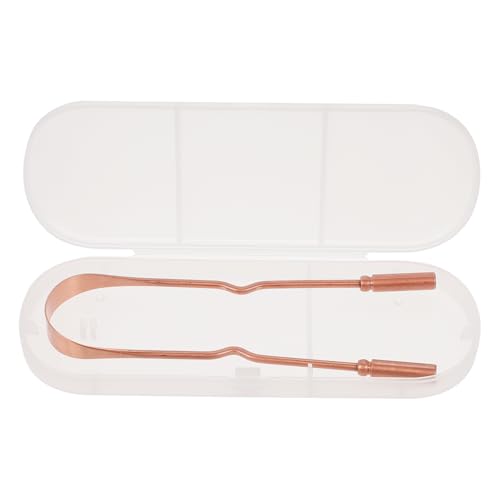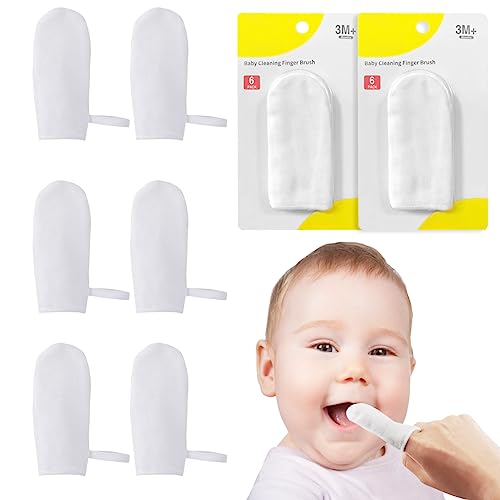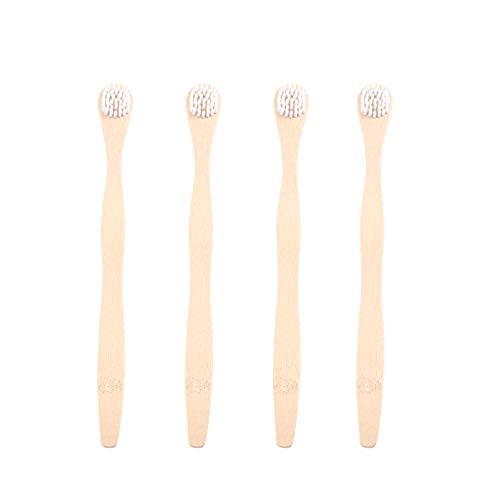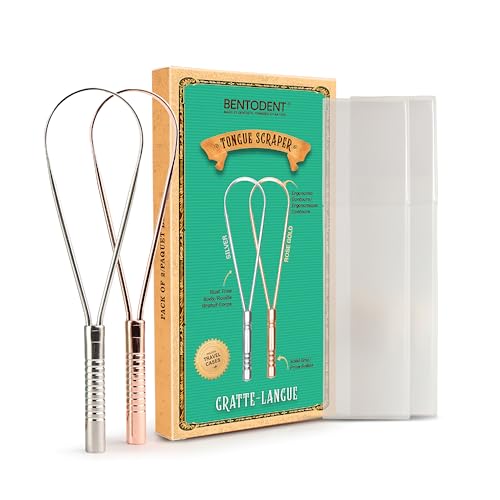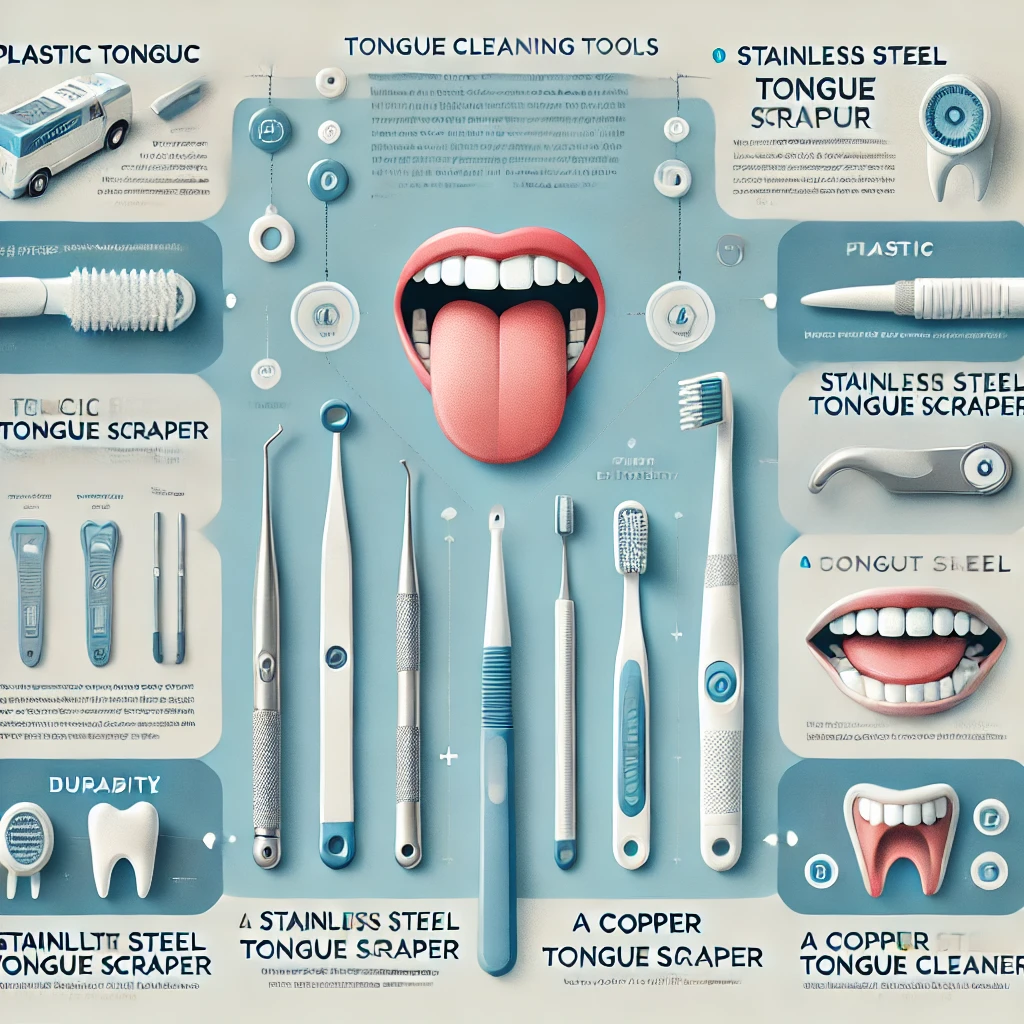Introduction Guide to Tongue Cleaning: Tongue cleaning is an often overlooked aspect of oral hygiene that plays a vital role in maintaining overall health. The surface of the tongue can harbor a significant amount of bacteria, food particles, and dead cells, which not only contributes to poor oral health but can also lead to unpleasant breath. While most oral care routines focus primarily on brushing and flossing teeth, the importance of cleaning the tongue cannot be underestimated.
Research indicates that the tongue’s rough texture can trap debris and microorganisms, creating an environment that fosters bacterial growth. This can lead to various oral health issues, including dental plaque, gum disease, and halitosis, or bad breath. In fact, studies have shown that a significant percentage of individuals suffering from persistent bad breath have an unclean tongue. Consequently, integrating tongue cleaning into one’s daily routine is recommended to mitigate these potential issues. Moreover, tongue cleaning is beneficial even beyond oral hygiene.
Benefits of Tongue Cleaning
Guide to Tongue Cleaning is an often-overlooked aspect of oral hygiene that offers a plethora of benefits for overall health. One of the most immediate advantages is the improvement of breath freshness. The surface of the tongue can harbor bacteria, food particles, and debris that lead to bad breath. Regular cleaning of the tongue, therefore, helps in removing these odorous compounds, significantly enhancing the freshness of one’s breath. Studies have shown that individuals who incorporate tongue cleaning into their daily routines report substantial reductions in halitosis, indicating its effectiveness.
Another noteworthy benefit of tongue cleaning is the enhancement of taste perception. The buildup of residue on the tongue can dull taste sensations, making it difficult to enjoy food fully. By removing this buildup through effective cleaning, individuals may find that their ability to taste flavors is revitalized. Research indicates that individuals practicing tongue cleaning are more likely to enjoy their meals, which contributes to a more satisfying culinary experience.
In addition to these benefits, Guide to Tongue Cleaning plays a crucial role in the prevention of oral diseases. The majority of oral health issues arise from the accumulation of bacteria in the mouth, which can lead to conditions such as gingivitis and periodontal disease. Maintaining a clean tongue minimizes the overall bacterial load, thus decreasing the risk of these diseases. Moreover, experts agree that cleaner surroundings in the oral cavity foster an environment less conducive to the development of these harmful conditions.
Finally, incorporating tongue cleaning into a daily hygiene routine promotes better overall oral hygiene. It serves as an essential complement to regular brushing and flossing, ensuring that the entire mouth remains clean and healthy. By recognizing the myriad benefits of tongue cleaning, individuals can take significant steps towards achieving optimal oral health and well-being.
Common Misconceptions About Tongue Cleaning
Despite the growing awareness of oral hygiene, several misconceptions about tongue cleaning persist, leading many individuals to overlook this essential practice. One prevalent myth is that brushing the teeth alone is sufficient to ensure overall oral health. While tooth brushing is critical in removing plaque and food particles from the teeth, it does not adequately address the buildup of bacteria and debris on the tongue. The surface of the tongue is textured, providing a perfect habitat for harmful bacteria, which can contribute to bad breath and other oral health issues. Therefore, incorporating Guide to Tongue Cleaning into daily routines is necessary for achieving optimal oral hygiene.
Another common misunderstanding revolves around the belief that tongue cleaning may damage the tongue’s surface. In reality, gentle tongue cleaning with appropriate tools, such as a tongue scraper or soft-bristled toothbrush, is safe and effective. These tools are specifically designed to remove accumulated substances without causing harm. Additionally, many individuals may fear that tongue cleaning could lead to gagging. However, with practice and using the right techniques, most people find tongue cleaning to be a quick and manageable part of their oral care routine.
Furthermore, some individuals mistakenly believe that tongue cleaning is only necessary for those experiencing bad breath or other oral issues.
How to Clean Your Tongue: Techniques and Tips
Maintaining oral hygiene extends beyond regular brushing and flossing; it includes tongue cleaning as an essential routine. Various techniques can be employed to achieve effective tongue hygiene, ensuring a fresher breath and overall health. Here are some practical methods, along with tips for their implementation.
One of the most common ways to clean your tongue is by using a toothbrush. When brushing your teeth, take a moment to gently brush your tongue’s surface. It is advisable to use a soft-bristled toothbrush to avoid irritation. Start at the back of the tongue and work your way forward, applying gentle pressure. Rinse your mouth thoroughly after brushing to eliminate any loosened debris.
An alternative and highly recommended technique is the use of a tongue scraper. To use a tongue scraper, position it at the back of the tongue and apply gentle but firm pressure as you scrape forward. Repeat this action several times, rinsing the scraper between strokes.
Mouthwash can also aid in tongue cleaning by reducing bacteria and promoting fresh breath. Use an alcohol-free mouthwash for optimal results, as alcohol can dry out the mouth. Swish the mouthwash around, ensuring it reaches the tongue, and gargle for a few moments before swallowing or spitting it out. Incorporating mouthwash into your daily oral hygiene routine can enhance the effects of tongue cleaning.
This timing helps remove the buildup of bacteria that accumulates overnight, contributing to a cleaner mouth and fresher breath throughout the day. Following these methods will facilitate a more comprehensive oral care routine, delivering significant benefits for your overall health.
Choosing the Right Tongue Cleaning Tool
Selecting the appropriate tongue cleaning tool is crucial for effective oral hygiene. There are several options available on the market, each offering distinct benefits. Understanding the characteristics of each material can significantly influence your choice.
Plastic tongue scrapers are lightweight and often come in various shapes and sizes. They are generally affordable and easy to use, making them a popular option for many. However, it is essential to note that plastic may not be as durable as other materials, and over time, regular use can lead to wear and tear. Hygiene is also a consideration, as some users may find that plastic is more susceptible to bacterial growth, especially if not cleaned thoroughly.
They provide a firm and sturdy cleaning surface, which can enhance the user’s ability to remove bacteria and debris effectively. Additionally, stainless steel is less prone to microbial growth compared to plastic, making it a more hygienic option overall. However, some users may find them less comfortable to handle, particularly if they are not accustomed to the weight.
Copper tongue scrapers are gaining popularity due to their natural antibacterial properties. The inherent qualities of copper can help to minimize the risk of infection, making it a unique choice for those mindful of hygiene. Moreover, many users appreciate the aesthetic appeal of copper, as it often comes with a beautiful finish. Nevertheless, copper tools may require more maintenance to prevent tarnishing and ensure longevity.
In conclusion, choosing the right tongue cleaning tool ultimately comes down to personal preference and specific needs regarding comfort, hygiene, and effectiveness. Taking the time to evaluate your options can lead to a more effective and enjoyable tongue cleaning routine.
Best Practices for Tongue Cleaning
Proper tongue cleaning is an integral aspect of maintaining optimal oral hygiene. To ensure its effectiveness, it is essential to adopt best practices that enhance both technique and routine. Begin by selecting an appropriate tongue cleaner, which can range from a simple toothbrush with a tongue-cleaning surface to specialized scrapers made of plastic or metal. Choose a tool that feels comfortable and effective for your needs.
When performing tongue cleaning, start at the back of the tongue and gently scrape forward, applying light pressure to minimize discomfort. It is recommended to clean the tongue at least once a day, ideally in the morning after brushing your teeth. Establishing a consistent routine is crucial.
Furthermore, maintaining cleanliness of your tongue cleaner is vital. Rinse your tool thoroughly after each use to remove any residue, and ensure that you store it in a clean, dry area. Regularly replacing your tongue cleaning device, much like your toothbrush, is essential to avoid bacterial buildup. By adhering to these best practices, individuals can optimize their tongue cleaning routine and enhance their overall oral health.
The Science Behind Tongue Cleaning
Tongue cleaning is a crucial aspect of oral hygiene that is often overlooked. Research has demonstrated that maintaining a clean tongue can significantly reduce the levels of harmful bacteria. A study published in the Journal of Dental Research found that participants who incorporated tongue cleaning into their daily routine showed marked improvement in their oral hygiene, evidenced by lower levels of bacteria and plaque accumulation. Expert opinions from dental professionals endorse tongue cleaning as an effective method to enhance oral hygiene practices. They assert that the process not only helps to eliminate bacterial build-up but also aids in improving overall taste perception by removing debris that may dull the taste buds.
Furthermore, tongue cleaning has been linked to systemic health benefits. Recent studies suggest that poor oral health, including bacterial growth on the tongue, can lead to conditions such as cardiovascular diseases and diabetes. By routinely cleaning the tongue, individuals may contribute to their overall health and reduce the risk of developing these conditions.
Common Issues and Solutions Related to Tongue Cleaning
This reflex can cause discomfort, making the process of Guide to Tongue Cleaning feel unpleasant. To mitigate this issue, it is advisable to start cleaning the tongue from the front and gradually progress towards the back as comfort allows. Using a gentle approach and a high-quality tongue scraper designed to minimize gag reflex can also be beneficial.
Another common concern is sensitive taste buds. Some individuals may find that aggressive cleaning can lead to irritation or discomfort in this area. To address this, it is essential to utilize a soft tongue scraper or toothbrush and apply a light touch.
Lastly, individuals with certain medical conditions, such as dry mouth or geographical tongue, may find tongue cleaning more challenging. Consulting a dental professional can provide tailored advice and alternative strategies suited to their specific needs. Overall, remaining patient and attentive to one’s comfort levels are key in overcoming these common tongue cleaning issues.
Conclusion
Maintaining good oral hygiene is essential for overall health, and tongue cleaning emerges as a vital component of this practice.
As you consider your own oral hygiene practices, remember that tongue cleaning should not be an afterthought. It deserves a prominent place alongside brushing and flossing. Making the commitment to prioritize this simple yet essential step can yield remarkable benefits in your daily life. By enhancing your oral hygiene regimen with tongue cleaning, you contribute to reducing the risk of various dental conditions and improve your confidence through fresher breath.
Ultimately, adopting tongue cleaning as a regular part of your routine can lead to significant improvements in your overall oral health. Establishing this habit will not only benefit you today but can also have lasting positive effects in the long run. Take the necessary steps towards incorporating Guide to Tongue Cleaning into your daily oral care, and witness the difference it makes in maintaining a healthy and vibrant smile.

